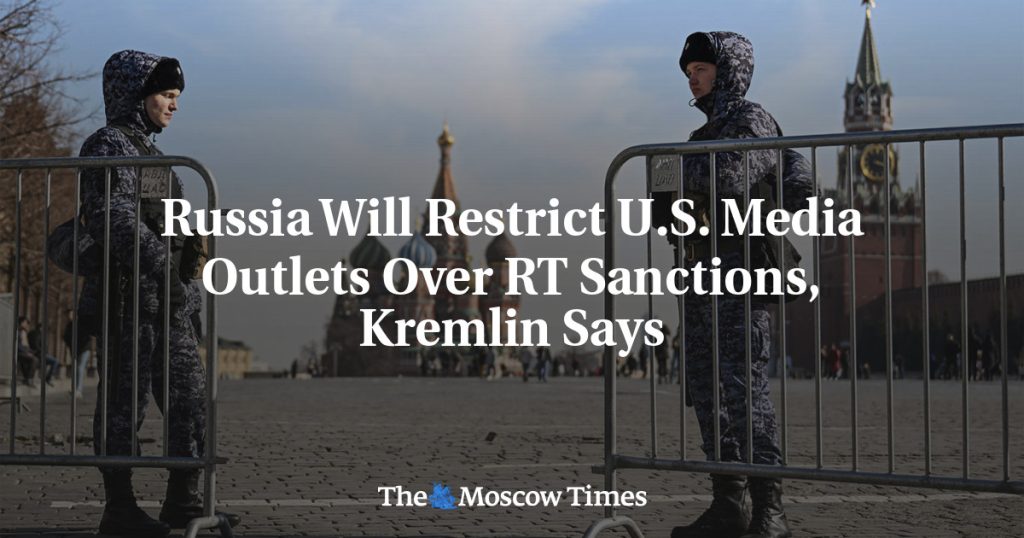The Kremlin announced that it would impose restrictions on American media outlets in response to new U.S. sanctions on the state-funded RT news network. This move came after the United States indicted two RT employees and sanctioned its top editors, accusing them of attempting to influence the upcoming U.S. presidential election. Kremlin spokesman Dmitry Peskov stated that while a direct response like that was not possible due to differences in media structures between the two countries, there would be measures in place to limit the dissemination of information by U.S. media outlets in Russia. However, specific details of these restrictions were not provided.
Many Western media outlets had already downsized or withdrawn their staff from Russia following the country’s full-scale invasion of Ukraine. This coincided with the introduction of strict censorship laws governing reporting on the conflict. The punitive measures imposed by the U.S. Treasury Department on Wednesday targeted 10 individuals and two entities, including RT editor-in-chief Margarita Simonyan and her deputy Elizaveta Brodskaia. These actions highlight heightened tensions between Russia and the United States, particularly concerning allegations of foreign interference in U.S. elections.
U.S. officials have repeatedly raised concerns about foreign powers attempting to meddle in American elections, with particular focus on Russian interference. This issue has been a source of contention since the 2016 presidential race between former President Donald Trump and Democratic candidate Hillary Clinton. The recent sanctions imposed on RT employees and editors are seen as part of ongoing efforts to combat such meddling and safeguard the integrity of the U.S. electoral process.
The Kremlin’s decision to restrict American media outlets in response to sanctions on RT reflects a tit-for-tat escalation in the ongoing diplomatic tensions between Russia and the United States. Both countries have engaged in a series of retaliatory actions, ranging from economic sanctions to diplomatic expulsions. Moscow’s move to limit the activities of U.S. media outlets within its borders is likely to further strain relations between the two nations and could have broader implications for freedom of the press and access to information.
The impact of these restrictions on American media outlets in Russia remains to be seen, but they could potentially hinder the ability of U.S. journalists to report on events in the country. This, in turn, raises concerns about press freedom and the free flow of information in Russia, particularly at a time of heightened political tensions and international scrutiny. The Kremlin’s decision to impose limitations on U.S. media outlets may further isolate Russia from the global media landscape and could exacerbate existing challenges related to censorship and media control.
As the diplomatic standoff between Russia and the United States continues, it remains uncertain how both countries will navigate their strained relationship in the coming months. The imposition of restrictions on American media outlets by Moscow is just one example of the retaliatory actions being taken in response to perceived provocations. The broader implications of these measures for the future of U.S.-Russia relations and global media freedom are yet to be fully understood, but they underscore the complexities and challenges inherent in managing international conflicts in an increasingly interconnected world.


